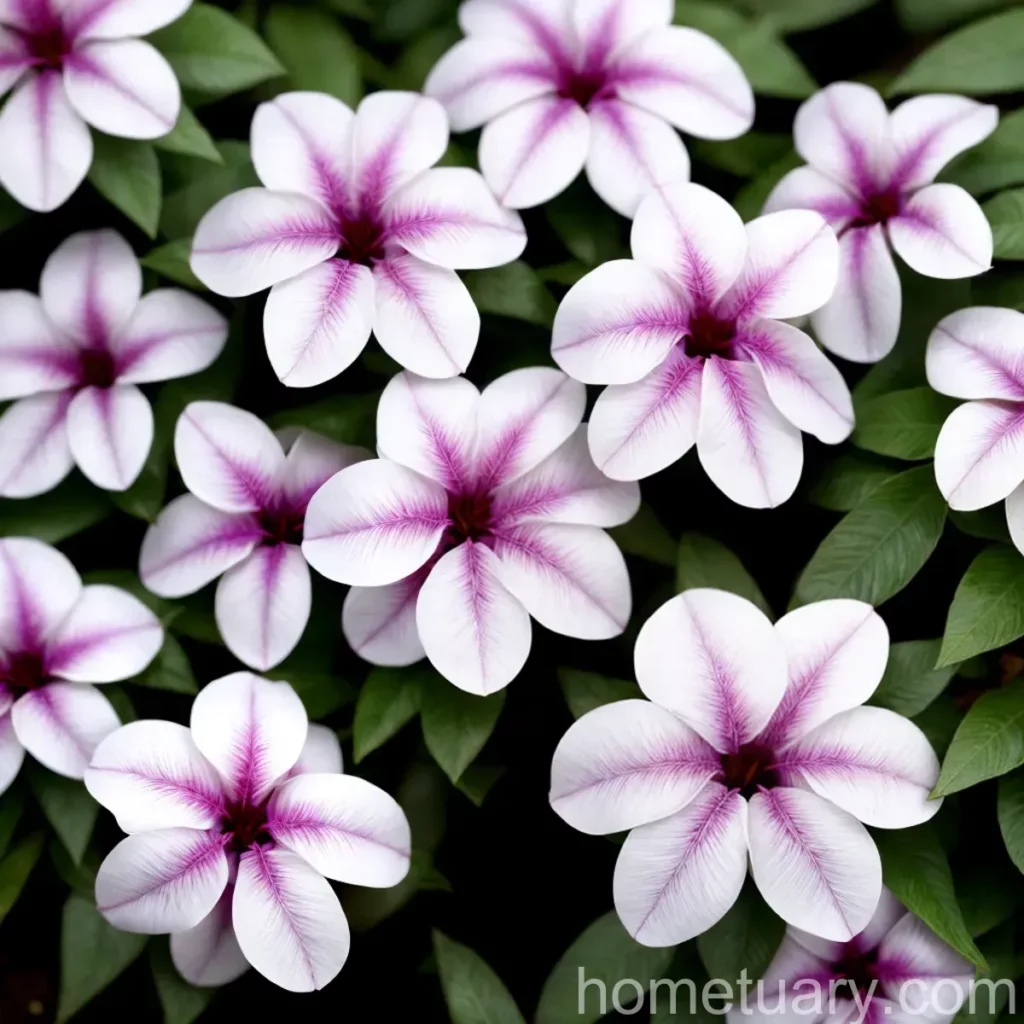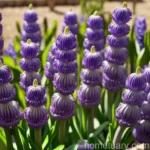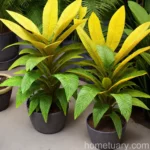Katie Ruella (Ruellia Simplex ‘White Katie’): A Comprehensive Plant Care Guide
The Ruellia simplex ‘White Katie’ is a beautiful and versatile plant that has gained popularity among gardeners due to its vibrant white flowers and low maintenance requirements. In this comprehensive plant care guide, we will delve into the various aspects of cultivating and caring for the Ruellia simplex ‘White Katie’ plant.
What is the Katie Ruella (Ruellia Simplex ‘White Katie’) Plant?
The Ruellia simplex ‘White Katie’ is a perennial flowering plant that is native to Mexico, which belongs to the Acanthaceae family. Also known as Katie Ruella, this plant is prized for its delicate, trumpet-shaped white flowers and lush green foliage. It is a relatively low-maintenance plant, making it a popular choice for gardens, landscapes, and containers.
Key Takeaways
Before delving deeper into the care requirements of the Ruellia simplex ‘White Katie’ plant, let’s take a quick look at the key takeaways for this guide:
- Plant Name: Ruellia simplex ‘White Katie’
- Plant Family: Acanthaceae
- Common Names: Katie Ruella
- Flower Color: White
- Plant Type: Perennial
- Sunlight Requirements: Partial to full sun
- Watering Needs: Moderate
- Soil Requirements: Well-draining, fertile soil
- Maintenance: Low
- Growth Habit: Spreading, clumping
- Special Features: Attracts butterflies, drought-tolerant
- Propagation: Division, cuttings
Now that we have an overview of the Ruellia simplex ‘White Katie’ plant, let’s explore the specific care guidelines for cultivating and maintaining this beautiful flowering perennial.
Culture
The culture of the Ruellia simplex ‘White Katie’ plant involves understanding its environmental requirements, growth habits, and special characteristics that contribute to its overall well-being.
Uses
The Ruellia simplex ‘White Katie’ plant can be utilized in various landscape and garden settings, and its potential uses include:
- Border plant in flower beds
- Ground cover in open spaces
- Container plant for patios and balconies
- Addition to rock gardens
- Component of mixed borders and plantings
- Focal point in urban and wildlife gardens
- Attracting butterflies and pollinators
The versatility of the Ruellia simplex ‘White Katie’ makes it an excellent choice for both amateur and experienced gardeners looking to enhance their outdoor spaces with a touch of elegance and natural beauty.
Water
Proper watering is crucial for the health and vitality of the Ruellia simplex ‘White Katie’ plant. While it is important to maintain consistent moisture levels, it is equally essential to avoid overwatering, which can lead to root rot and other water-related issues.
-
Watering Frequency: The Ruellia simplex ‘White Katie’ plant thrives in moderately moist soil. Water the plant when the top inch of the soil feels dry to the touch. During hot summer months, more frequent watering may be necessary, while reduced watering is advisable during cooler periods.
-
Watering Method: Apply water at the base of the plant to ensure that the root zone receives adequate moisture. Avoid overhead watering, which can contribute to foliage diseases and wastage of water.
-
Watering Considerations: Consider the natural rainfall and environmental conditions in your area when determining the watering schedule for the Ruellia simplex ‘White Katie’ plant. Adjust the frequency accordingly to avoid water stress or waterlogged soil.
Sunlight
The sunlight requirements of the Ruellia simplex ‘White Katie’ plant play a significant role in its overall growth and flowering performance. Understanding its sunlight preferences is essential for selecting the ideal planting location and ensuring optimal blooming.
-
Sun Exposure: The Ruellia simplex ‘White Katie’ plant thrives in partial to full sun conditions. It flourishes best when exposed to at least 6 hours of direct sunlight daily. In regions with intense afternoon sun and heat, partial shade during the hottest part of the day can be beneficial for the plant.
-
Indoor Sunlight: When grown indoors, provide the Ruellia simplex ‘White Katie’ plant with bright, indirect sunlight. A south-facing window or a spot with ample natural light is ideal for indoor cultivation.
-
Sunlight Considerations: Monitor the plant for any signs of sunburn or heat stress, especially during the peak of summer. Adjust its exposure or provide shading if necessary to protect the foliage from excessive sun exposure.
Fertilizer
Appropriate feeding with a balanced fertilizer can promote healthy growth and prolific flowering in the Ruellia simplex ‘White Katie’ plant. Understanding the fertilizer requirements and application practices is essential for maximizing the plant’s potential.
-
Fertilizer Type: Use a well-balanced, all-purpose fertilizer with an N-P-K ratio of 10-10-10 or similar. Alternatively, a fertilizer formulated specifically for flowering plants can be beneficial for the Ruellia simplex ‘White Katie’.
-
Fertilizer Application: Apply the fertilizer according to the manufacturer’s instructions, typically in spring and summer when the plant is actively growing and flowering. Avoid overfertilization, as this can lead to excessive foliage growth at the expense of flowers.
-
Fertilizer Considerations: Consider the soil fertility and previous fertilizer applications when determining the feeding schedule for the Ruellia simplex ‘White Katie. Adjust the dosage and frequency based on the plant’s response to the fertilizer.
Soil
The quality and composition of the soil directly influence the overall health and growth of the Ruellia simplex ‘White Katie’ plant. Understanding the soil requirements and making suitable adjustments can contribute to the plant’s long-term success.
-
Soil Type: The Ruellia simplex ‘White Katie’ plant thrives in well-draining, fertile soil. A loamy soil with good moisture retention and adequate aeration is ideal for supporting the plant’s root development and nutrient uptake.
-
Soil pH: The plant prefers a slightly acidic to neutral soil pH range of 6.0 to 7.0. Conduct a soil pH test if necessary and amend the soil with organic matter or pH-adjusting materials to achieve the desired pH level.
-
Soil Preparation: Prior to planting, prepare the soil by incorporating organic amendments such as compost, peat moss, or well-rotted manure. This improves the soil structure, fertility, and moisture retention capabilities.
-
Soil Drainage: Ensure proper drainage to prevent waterlogging, which can lead to root rot and other soil-related issues. Amending the soil with coarse sand or perlite can enhance drainage in heavy or compacted soils.
-
Soil Considerations: Monitor the soil moisture and texture regularly to ensure that it remains conducive to the Ruellia simplex ‘White Katie’ plant’s needs. Adjust the soil composition as needed to maintain optimal growing conditions.
Pruning
Pruning is an essential aspect of Ruellia simplex ‘White Katie’ plant care, as it helps maintain the plant’s shape, control its size, and promote a tidy appearance. Proper pruning practices can also encourage new growth and flowering, contributing to the overall aesthetic appeal of the plant.
-
Timing: Prune the Ruellia simplex ‘White Katie plant in late winter or early spring, before the onset of new growth. Additionally, light pruning throughout the growing season can help manage the plant’s size and shape.
-
Pruning Techniques: Use sterile and sharp pruners to remove dead or damaged foliage, spent flowers, and overgrown stems. Additionally, consider thinning out dense patches to improve air circulation and light penetration within the plant.
-
Pruning Considerations: Avoid heavy pruning that removes a significant portion of the plant’s foliage, as this can stress the Ruellia simplex ‘White Katie plant. Instead, focus on selective and gradual pruning to maintain a balanced and healthy growth habit.
Propagation
The Ruellia simplex ‘White Katie’ plant can be propagated through various methods, including division and stem cuttings. Understanding the propagation techniques allows gardeners to expand their plant collection and share this beautiful species with others.
Division
Dividing mature Ruellia simplex ‘White Katie plants is a reliable method of propagation, particularly when the plant has developed multiple clumps and dense growth.
-
Timing: Divide the plant in early spring before new growth emerges, or in late summer to early fall when the weather is still warm.
-
Procedure: Carefully dig up the plant and separate the clumps using a sharp garden tool, ensuring that each division has a portion of the root system and several healthy stems.
-
Planting: Replant the divided sections in prepared soil, water thoroughly, and provide appropriate care to facilitate the establishment of the new plants.
Stem Cuttings
Taking stem cuttings from healthy Ruellia simplex ‘White Katie plants is an effective way to propagate new specimens using vegetative means.
-
Cutting Preparation: Select healthy, non-flowering stems and take 4-6 inch cuttings, ensuring that each cutting has several sets of leaves.
-
Rooting Medium: Dip the cut end of each cutting in a rooting hormone and plant it in a well-draining rooting medium, such as a mix of perlite and peat moss.
-
Rooting Conditions: Place the cuttings in a warm, bright location with consistent moisture and humidity. Covering the cuttings with a clear plastic dome or bag can create a favorable rooting environment.
-
Transplanting: Once the cuttings have developed roots, carefully transplant them into individual pots or the desired planting location, taking care not to disturb the fragile root system.
Propagation Considerations
Monitor the newly propagated Ruellia simplex ‘White Katie plants closely to ensure they receive adequate water, warmth, and protection from harsh environmental conditions. After successful establishment, continue to provide standard care for the growing plants to encourage healthy development.
Container Popularity
The Ruellia simplex ‘White Katie plant is increasingly popular as a container specimen due to its compact growth habit, attractive flowers, and versatility in various outdoor and indoor settings.
-
Container Types: Select a well-draining container that is large enough to accommodate the plant’s root system and provide room for future growth. Terra cotta, plastic, or ceramic containers are suitable options for growing Ruellia simplex ‘White Katie.
-
Container Placement: Position the container in a location that receives the recommended sunlight exposure for the Ruellia simplex ‘White Katie plant. Ensure proper air circulation around the container to prevent excessive moisture buildup.
-
Container Care: Monitor the soil moisture in the container, as potted plants may dry out more quickly than those planted in the ground. Adjust the watering frequency as needed to maintain consistent moisture levels.
-
Overwintering: In regions with cold winters, consider overwintering container-grown Ruellia simplex ‘White Katie plants indoors to protect them from frost and freezing temperatures. Provide adequate light and maintain moderate watering during the winter months.
Common Diseases
The Ruellia simplex ‘White Katie plant is relatively resistant to diseases, but certain environmental conditions and cultural practices can contribute to potential issues. Understanding the common diseases and their management is essential for maintaining plant health.
Disease Diagnosis
Common diseases that may affect the Ruellia simplex ‘White Katie plant include:
-
Powdery Mildew: A fungal disease that presents as white, powdery spots on the foliage. It thrives in humid conditions and can lead to foliage distortion and reduced plant vigor.
-
Leaf Spot: Characterized by dark, water-soaked spots on the leaves, often surrounded by a yellow halo. Leaf spot diseases can progress under wet, humid conditions and may cause premature leaf drop.
-
Root Rot: Excessive soil moisture or poor drainage can lead to root rot in the Ruellia simplex ‘White Katie plant, resulting in yellowing foliage, wilting, and overall decline.
Disease Management
-
Cultural Practices: Ensure proper air circulation, adequate spacing, and good sanitation practices to minimize the risk of fungal diseases. Avoid overhead watering, especially in humid conditions.
-
Fungicidal Treatments: In cases of severe disease infestations, consider applying fungicidal treatments according to the manufacturer’s instructions. Copper-based fungicides and neem oil are effective options for managing powdery mildew and leaf spot diseases.
-
Soil Moisture Control: Maintain proper soil moisture levels and optimize drainage to prevent root rot. Avoid waterlogging the soil, especially during periods of low light and cooler temperatures.
Common Pests
While the Ruellia simplex ‘White Katie plant is generally resistant to most pests, occasional infestations of certain insects may occur. Identifying and addressing common pests promptly is crucial for preserving the plant’s health and appearance.
Pests Diagnosis
Common pests that may affect the Ruellia simplex ‘White Katie plant include:
-
Aphids: Small, soft-bodied insects that cluster on tender new growth and undersides of leaves, sucking plant juices and excreting honeydew. Aphid infestations can cause leaf distortion and weaken the plant.
-
Spider Mites: These tiny arachnids feed on the plant’s sap, causing stippling or yellowing of the foliage. In severe cases, spider mite infestations can lead to webbing on the plant and reduced vigor.
-
Whiteflies: Small, white, moth-like insects that congregate on the undersides of leaves, where they feed on plant sap. Whitefly infestations can lead to the development of sooty mold and the weakening of the plant.
Pest Management
-
Mechanical Control: Physically remove pests such as aphids and whiteflies from the Ruellia simplex ‘White Katie plant using a gentle stream of water or by wiping the foliage with a damp cloth.
-
Horticultural Oils: Apply horticultural oils or insecticidal soaps to control spider mites and other soft-bodied pests, ensuring complete coverage of the affected plant parts.
-
Natural Predators: Encourage the presence of natural predators such as ladybugs, lacewings, and predatory mites, which help keep pest populations in check through biological control.
-
Preventive Measures: Regularly monitor the plant for signs of pest activity and take preventive measures such as maintaining overall plant health, removing debris, and avoiding stressors that make the plant more susceptible to pest infestations.
Botanist’s Tips
As a plant scientist, I offer the following tips to optimize the care and cultivation of the Ruellia simplex ‘White Katie plant:
-
Monitor Environmental Conditions: Regularly observe and assess the plant’s growing environment, including sunlight exposure, soil moisture, and potential stress factors such as extreme temperatures or drought conditions.
-
Implement Integrated Pest Management (IPM): Adopt an integrated approach to pest management that combines cultural, mechanical, biological, and, if necessary, chemical control methods to address pest issues while minimizing environmental impact.
-
Support Beneficial Pollinators: Cultivate a pollinator-friendly garden to attract bees, butterflies, and other beneficial insects that aid in pollination and contribute to a healthy ecosystem.
-
Promote Sustainable Practices: Embrace sustainable gardening practices such as water conservation, composting, and the use of organic amendments to maintain the long-term health and resilience of the Ruellia simplex ‘White Katie plant and the surrounding environment.
Fun Facts
- The Ruellia simplex ‘White Katie plant is named after the Swiss botanist Samuel Brunner, who first described the genus Ruellia in the 18th century.
- The trumpet-shaped flowers of the Ruellia simplex ‘White Katie are known to attract hummingbirds in addition to butterflies, adding to the plant’s attractiveness in gardens and landscapes.
- In some regions, the Ruellia simplex species, including the ‘White Katie’ variety, is utilized as a traditional remedy for certain ailments, with its leaves and roots reportedly possessing therapeutic properties.
Links to External Resources
For further information and resources on the care and cultivation of the Ruellia simplex ‘White Katie plant, consider exploring the following links:
- Royal Horticultural Society – Ruellia simplex
- University of Florida IFAS Extension – Mexican Petunia, Ruellia simplex
- Missouri Botanical Garden – Ruellia simplex
- North Carolina State University Extension – Ruellia simplex
- University of South Florida – Florida Friendly Landscaping: Ruellia simplex
By referencing these valuable resources, gardeners can access additional insights, growing tips, and regional recommendations for successfully cultivating the Ruellia simplex ‘White Katie plant in diverse horticultural settings.
In conclusion, the Ruellia simplex ‘White Katie plant is a captivating and adaptable perennial species that enhances outdoor spaces with its profusion of white flowers and lush foliage. By adhering to the recommended care guidelines and embracing sustainable gardening practices, enthusiasts can celebrate the enchanting beauty and natural resilience of the Ruellia simplex ‘White Katie in gardens, landscapes, and container plantings.
Remember, successful gardening requires patience, observation, and a genuine appreciation for the unique qualities of each plant species. As a plant scientist, I encourage you to explore and cultivate the Ruellia simplex ‘White Katie plant with a sense of curiosity and an unwavering enthusiasm for the wonders of nature.
Note: The comprehensive plant care guide for the Ruellia simplex ‘White Katie’ plant is intended to offer in-depth insights and practical recommendations. However, it is advisable to consult local gardening experts, cooperative extension services, and reputable horticultural sources for region-specific advice and regulations pertaining to plant care and cultivation.
Disclaimer: The information provided in this guide is based on current botanical knowledge and horticultural practices. As plant science continues to evolve, it is recommended to stay informed about any updates or new developments in plant care and gardening recommendations















